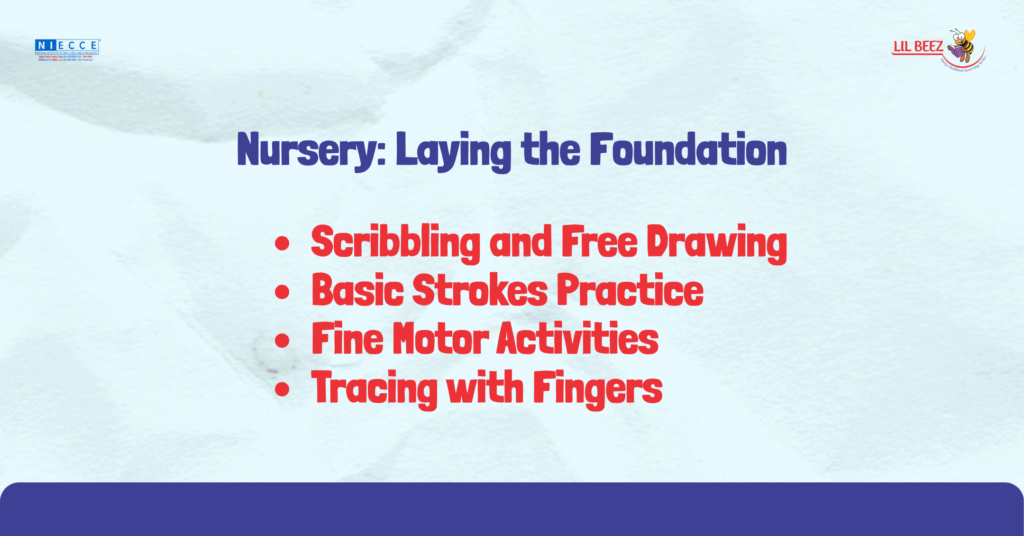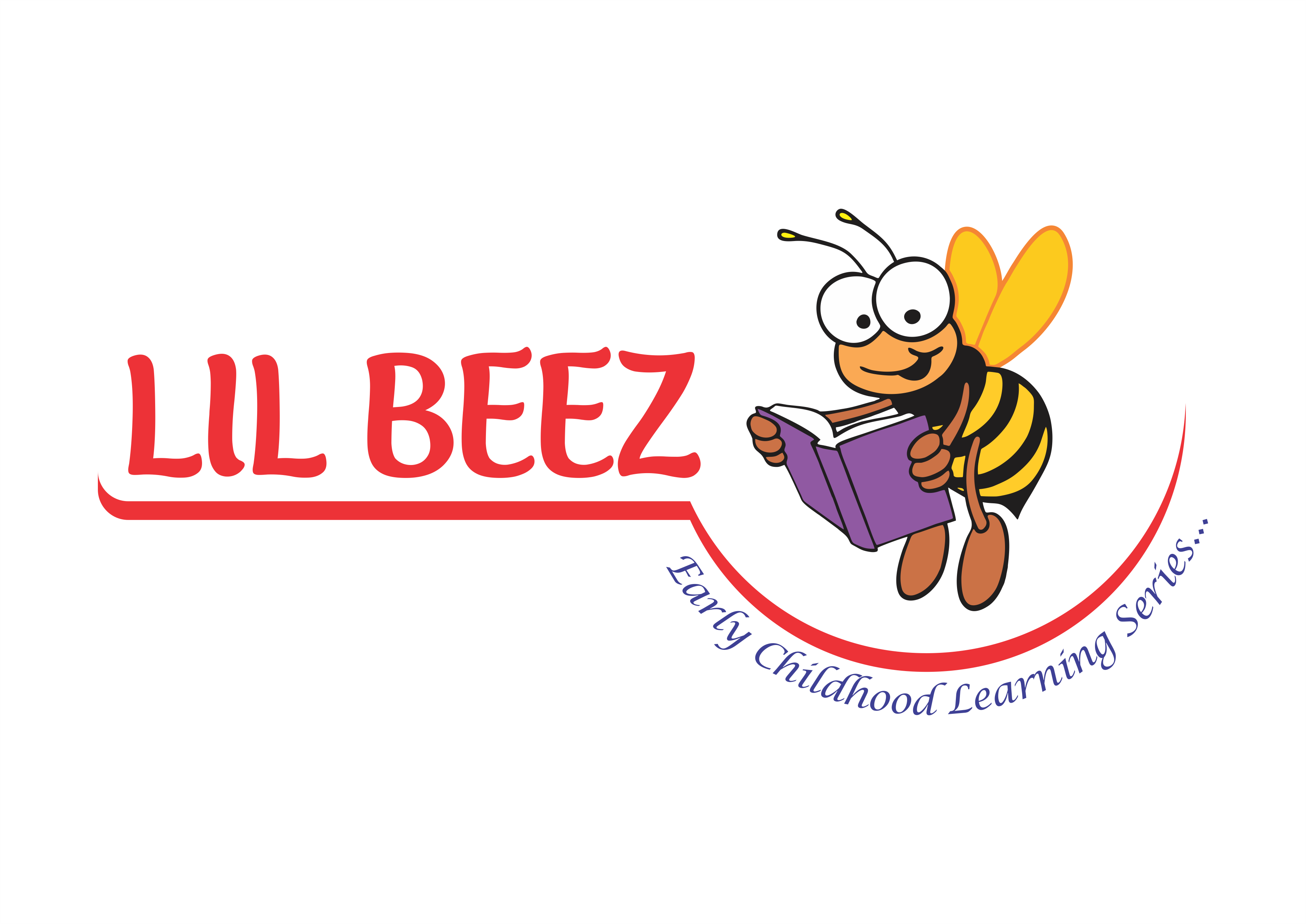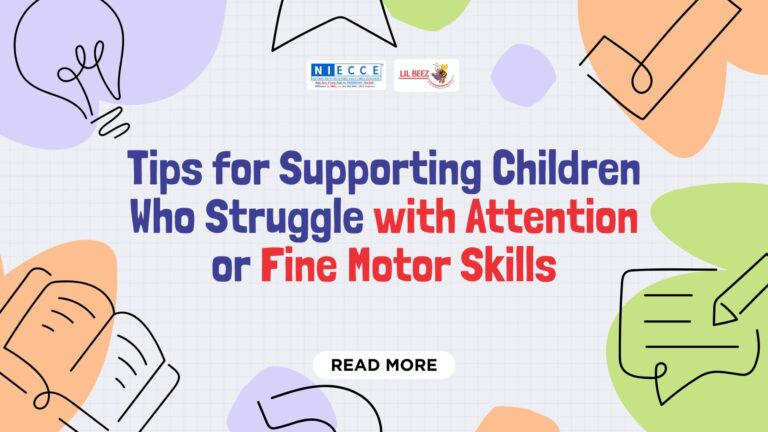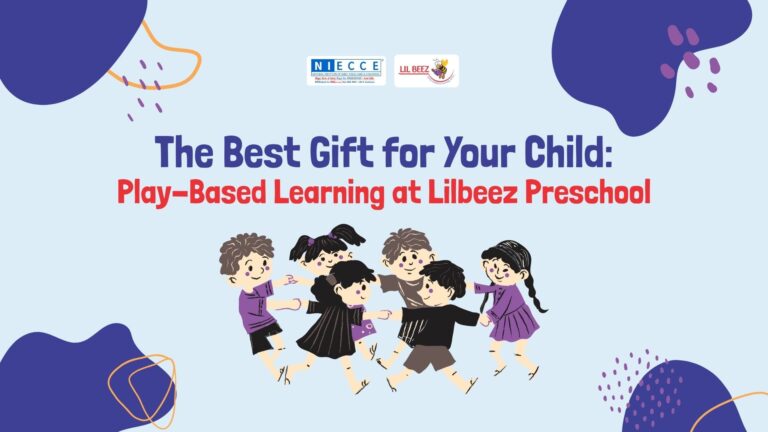The journey of writing doesn’t begin with a pencil in hand—it starts much earlier with scribbles, strokes, and stories told through drawings. For preschoolers, writing is not just about forming letters, but about developing the fine motor skills, confidence, and curiosity to express themselves. In the LilBeez curriculum, the introduction to writing is a gradual, child-friendly process designed to grow with the child from Nursery to LKG.
Nursery: Laying the Foundation
At the Nursery level (typically 2.5 to 3.5 years), the focus is on pre-writing skills. Instead of diving into the alphabet right away, children are introduced to:
- Scribbling and Free Drawing: This builds muscle control and creativity.
- Basic Strokes Practice: Standing, sleeping, slanting lines, curves, and zig-zags.
- Fine Motor Activities: Tearing, clay moulding, threading beads, and finger painting help strengthen finger grip and hand-eye coordination.
- Tracing with Fingers: On sand, textured surfaces, or air to introduce directionality.
The goal in Nursery is not to write, but to prepare to write—by making it fun, sensory-rich, and pressure-free.

✏️ LKG: Moving Towards Letters and Shapes
Once children enter LKG (typically 3.5 to 4.5 years), they are more physically and cognitively ready for structured writing. This stage includes:
- Tracing Letters and Numbers: Starting with capital letters and numbers with dotted lines.
- Grip Practice: Using thick crayons and pencils to promote the correct tripod grip.
- Stroke-based Letter Grouping: Introducing letters based on similar strokes (e.g., L, T, I, E) to build familiarity.
- Pattern Worksheets: Maze paths, join-the-dots, and pattern drawing to reinforce stroke control.
- Name Writing Practice: Encouraging personal connection to writing by letting them write their names gradually.
At this stage, writing is still paired with storytelling, pictures, and verbal expression to keep learning holistic and playful.
🧠 The Role of a Curriculum
A structured, NEP-aligned curriculum like LilBeez ensures a seamless transition from pre-writing to writing. With tools like pre-printed worksheets, stroke-based sequencing, and motor skill-aligned activities, writing is introduced in a developmentally appropriate, stress-free manner.
💡 Tips for Parents and Teachers
- Never rush the writing process—respect each child’s pace.
- Celebrate small achievements, like holding the pencil right or completing a line of tracing.
- Use multisensory methods—write with fingers in flour, use chalk on the floor, or trace with a brush.
- Read regularly—recognition of letters and words builds the readiness to write them.
🏁 Final Thoughts
Writing is a beautiful milestone in a child’s journey, and it deserves to be introduced with care, creativity, and compassion. From the first scribble to the first written word, it’s a gradual process filled with discovery and delight. With the right support from parents, teachers, and a thoughtful curriculum like LilBeez, children grow into confident young writers—one stroke at a time.




